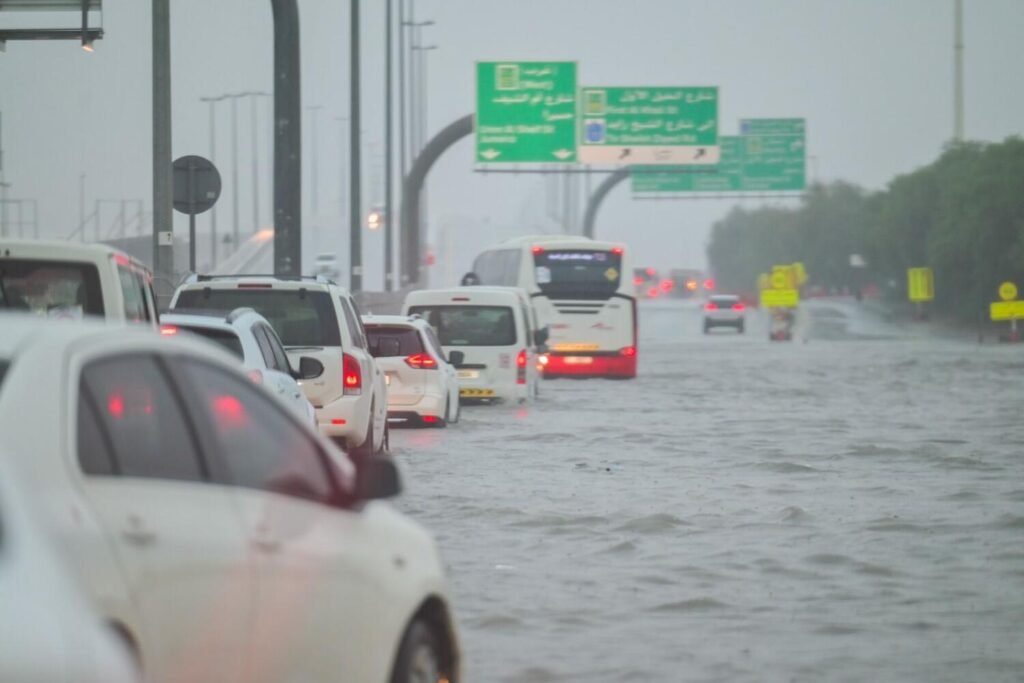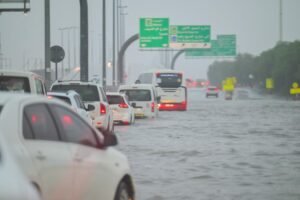

Fourteen areas in Dubai have been identified as flood-prone and may get affected during severe weather conditions, such as the unprecedented rainfall experienced in April.
Among the hotspots, three areas are located along Sheikh Zayed Road, two along Al Khail Road, and four along Sheikh Mohammed bin Zayed Road. Additionally, two locations on Emirates Road, one on Seih Al Salam Street, one on Ras Al Khor Street, and one on Al Rabat Street were identified as vulnerable.
By identifying these vulnerable areas, Dubai authorities are taking proactive steps to protect residents and infrastructure from the impacts of natural disasters. This mapping initiative aims to enhance response strategies and strengthen infrastructure resilience.
This came as the Dubai Police hosted a seminar on ‘Crisis and Natural Disaster Management’.
Mohammed Al Dhanhani, director of corporate risk management and business continuity at Dubai Municipality, said, “At the end of the last rainy season, we initiated several short-term and long-term projects to manage rainwater accumulation effectively in critical areas. Our goal is to increase capacity and mitigate the risks associated with heavy rainfall.”
Furthermore, he noted that 90 per cent of the identified areas have undergone facelifts after the previous rains, preparing them for future natural disasters.
Muhannad Khalid Al Muhairi, director of the commercial transport activities department at the Roads and Transport Authority (RTA), said, “In addition to the 14 hotspots, we have identified 22 other locations that pose challenges during the rainy season. Solutions are being implemented in cooperation with Dubai Municipality, including the installation of pumps to drain accumulated water into designated channels.”
During the press conference attended by numerous authorities, proposals and recommendations were presented to elevate crisis management and prepare for future challenges.
Among the efforts highlighted was the recent announcement by Sheikh Mohammed bin Rashid Al Maktoum, Vice-President and Prime Minister of the UAE and Ruler of Dubai, regarding a Dh30 billion rain drainage network project named ‘Tasreef’, which is scheduled for completion by 2033.
Lieutenant General Dhahi Khalfan bin Tamim, Deputy Chief of Police and Public Security in Dubai, proposed forming a committee comprising representatives from the National Emergency Crisis and Disasters Management Authority (NCEMA), Dubai Police, Dubai Civil Defense, Dubai Municipality, the Roads and Transport Authority (RTA), to develop urgent solutions for heavy rains and floods. “The team should be led by experienced individuals who can manage the process professionally,” he emphasised.
He also suggested establishing a unified contact number for crisis inquiries, stating, “Some people call the municipality, while others contact civil defence or police. There must be a specific number to sort cases and connect them to the relevant authority immediately. Community education on this information is essential.”
He also highlighted the importance of developing specialised equipment and vehicles for Dubai law enforcement teams during heavy rains to ensure safe passage for road users and rescue teams. Furthermore, he called for a serious approach to addressing meteorological warnings, preparing in advance to prevent water accumulation crises and safeguard individuals and property.
Lieutenant General Dhahi also stressed the need for plans to educate the community about following official instructions during crises. “We must teach the community how to prepare for disasters in all aspects, including insuring cars, homes, and personal safety,” he remarked. He advocated learning from other countries’ experiences and best practices in rainwater drainage and urged authorities to establish procedures to maintain public safety during emergencies.


